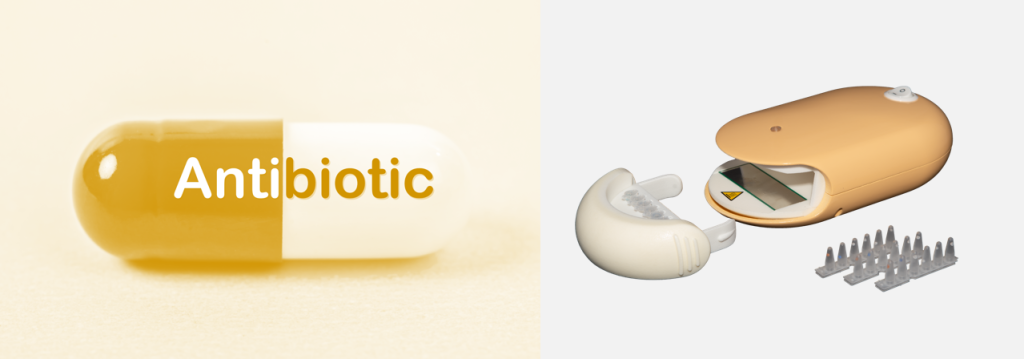Introducing the qcLAMP-Mini: A Game Changer in UTI Testing

Reducing Speculative Antibiotic Use with Effective UTI Testing
Antibiotic resistance (AMR) is a growing concern in both human and veterinary medicine. One crucial aspect of combating this issue is reducing the speculative use of antibiotics, particularly for conditions like urinary tract infections (UTIs). The qcLAMP-Mini is a revolutionary tool designed to assist veterinarians in making informed decisions about antibiotic use, thereby promoting responsible antibiotic stewardship.
The Challenge of Responsible Antibiotic Use
The primary goal of responsible antibiotic use is to minimise unnecessary prescriptions, select appropriate antibiotics, and effectively audit their duration of use. One of the most frequent clinical signs in pets that may (or may not) indicate an infection is related to the lower urinary tract. Dogs and cats often present with symptoms such as stranguria (painful urination) or haematuria (blood in urine), leading to immediate concerns for both the pet and the owner. This situation can result in a “knee-jerk” prescription of antibiotics, which might not be needed or might be inappropriate for the infection.
Such cases pose multiple threats to antibiotic stewardship and contribute to the problem of AMR. To address this, veterinarians need a systematic approach to determine whether an infection is present and, if so, identify the causative organism.
Enter the qcLAMP-Mini
The qcLAMP-Mini provides a solution to this challenge by delivering quick and accurate results. Using a small volume of urine, this method can determine the presence of a UTI and identify the specific organism within 35 minutes. This rapid turnaround is crucial for effective decision-making in the clinic, allowing veterinarians to avoid unnecessary antibiotic prescriptions.
By confirming the presence or absence of infection promptly, the qcLAMP-Mini helps ensure that antibiotics are only prescribed when absolutely necessary. This reduces the overall prescription rate and mitigates the environmental impact of antibiotic disposal. In cases where no infection is detected, supportive treatment can be provided for inflammatory conditions, or further investigations can be conducted for other potential causes, such as urolithiasis or sterile cystitis in cats.
Managing Positive UTI Cases
When an infection is identified, the next step is to treat the bacteria present. While the qcLAMP-Mini indicates which organism is present, it does not provide sensitivity information. This can be obtained through routine urine culture, with results typically available within 48 hours. In the interim, veterinarians can refer to the BSAVA PROTECT ME poster for recommendations on empiric therapy, ensuring a rational and evidence-based approach to antibiotic use.
By identifying the specific organism and following the BSAVA guidelines, veterinarians can begin appropriate treatment while waiting for culture results. This approach supports responsible antibiotic use and helps avoid inappropriate selections.
Future Developments
Looking ahead, plans for the qcLAMP-Mini include facilitating the identification of species carrying AMR genes. This advancement will provide critical information on how these genes are disseminated by pets, contributing to a better understanding of AMR management.
Conclusion
The qcLAMP-Mini is an invaluable tool for veterinarians, promoting responsible antibiotic use and aiding in the fight against AMR. By providing rapid and accurate UTI testing, it ensures that antibiotics are prescribed only when necessary, based on solid evidence. This not only benefits individual patients but also supports broader public health efforts to combat antibiotic resistance.
For more information on how the qcLAMP-Mini can enhance your practice and support responsible antibiotic use, contact us or visit our website.
This article was authored and provided to us by Dr Kevin Slater from PraecisDx.


